Wildlife on North Island
Wildlife on North Island
Aside from the turtles and the tortoises, there’s a small but interesting mix of other creatures that make up the island’s food chain. Small, because it’s an island, over 4 weeks I saw much of what the island had to offer, terrestrially at least. There are no land mammals, rats have been eradicated, and there’s nothing in way of nocturnal animals (save the emerging green turtles).
Birds
Moorhens
You can’t travel far without hearing the crying calls of a juvenile moorhen. Moorhens dominate the plateau, there’s nothing predating them, so their numbers keep growing. On the grasses they fight and squabble, vying for food and presumably territory. From the buggy I often saw small groups of them fleeing the roadside into the foliage, their tale feathers twitching as they run.
They like to eat from the myna bird traps, trapping themselves until a volunteer comes to free them.
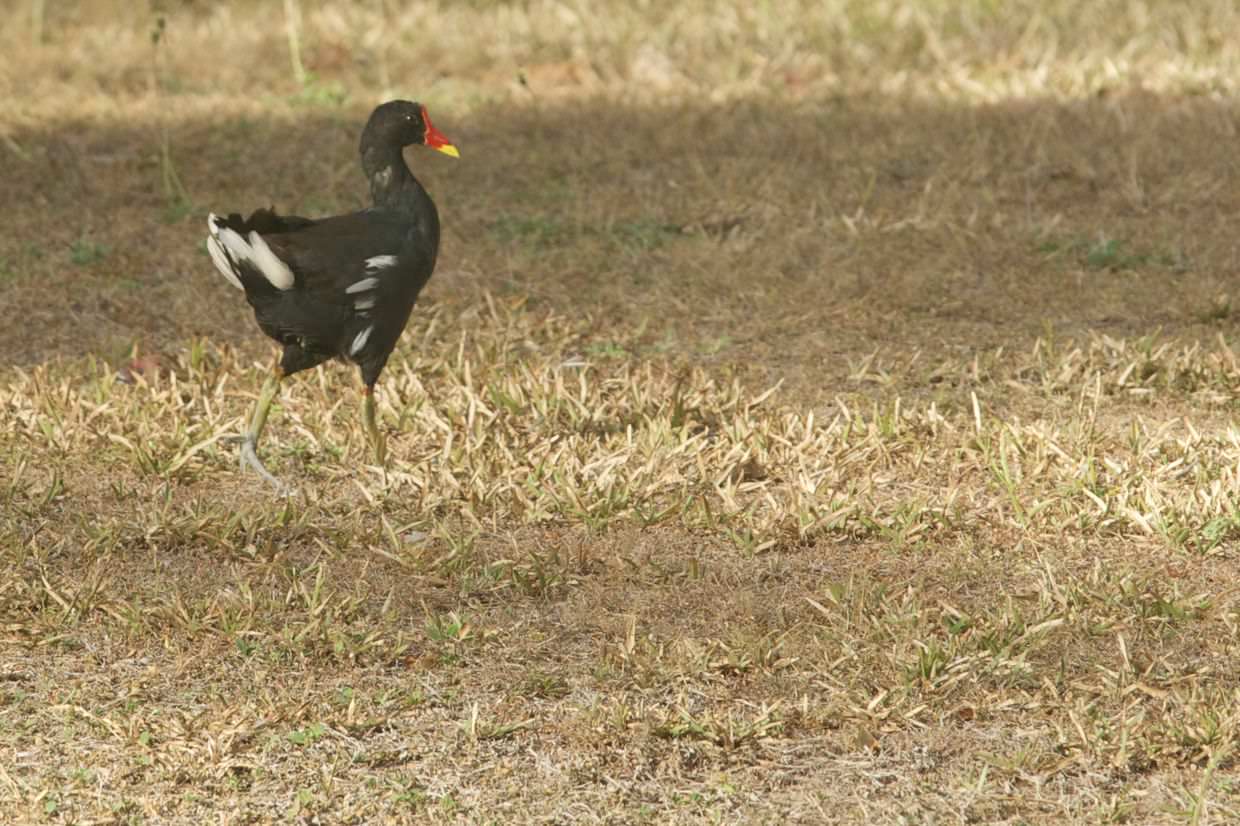
Zebra doves
Alongside the moorhens are one of my new favourite birds, the barred ground dove, or zebra dove. It’s a tiny dove with subtle black stripes and blue-ish face. It’s incredibly cute, and the males greet each other with a delightful little dance. Many times I’d be sitting outside the volunteer house, reading David Attenborough’s biography, and these little things would wander around by my feet, coo-ing, and calling to each other. Fabulous.
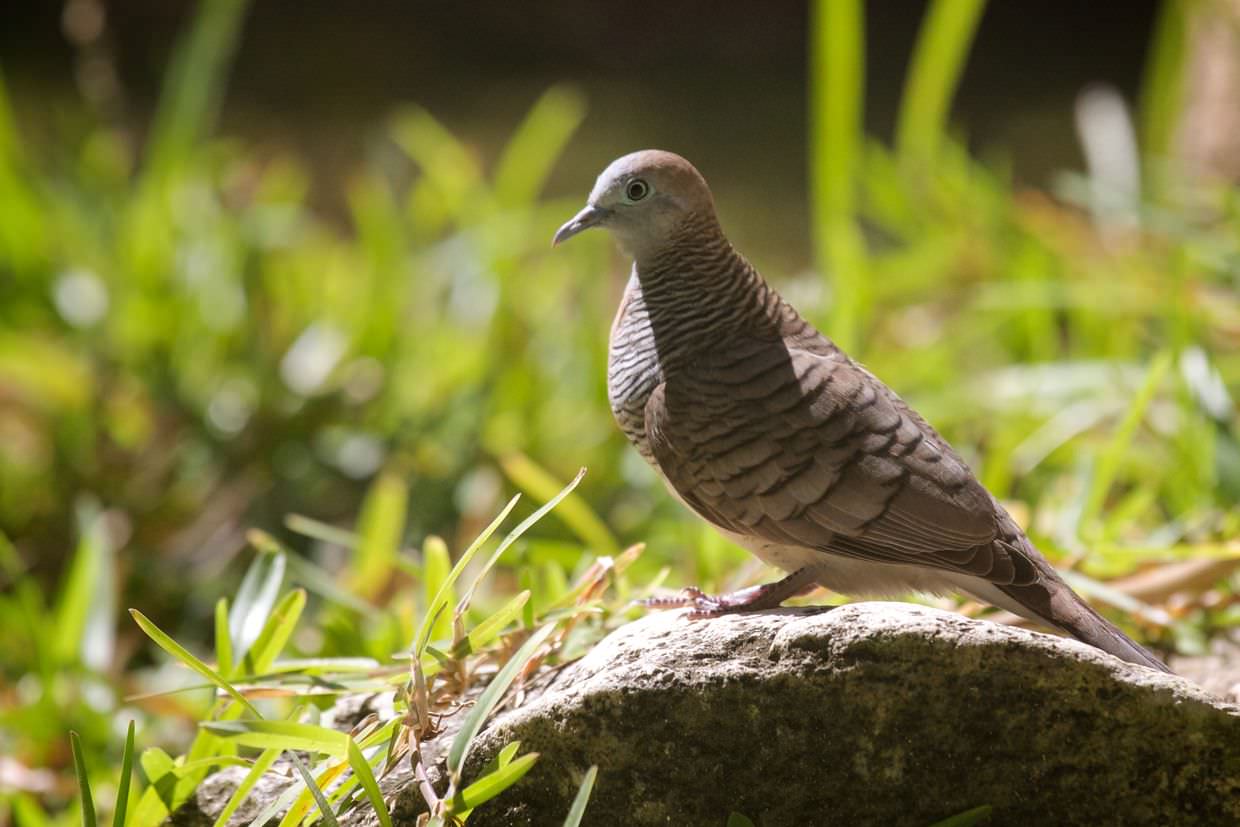
Seychelles sunbirds
A slightly less common sight, but not rare, are the seychelles sunbirds. A pair of these could occasionally be seen flitting near the house, drinking nectar from a nearby hibiscus. Like hummingbirds, they hover briefly in the air, fly swiftly and change direction quickly; always fascinating to observe.
Seychelles blue pigeon
The name of this bird confused me at first, from afar it doesn’t look blue, and it didn’t look quite like a pigeon, with its white crown and red head. Like with many other birds, a pair of these pigeons often sat near the volunteer house, nestled high up in a takamaka tree, occasionally cooing.
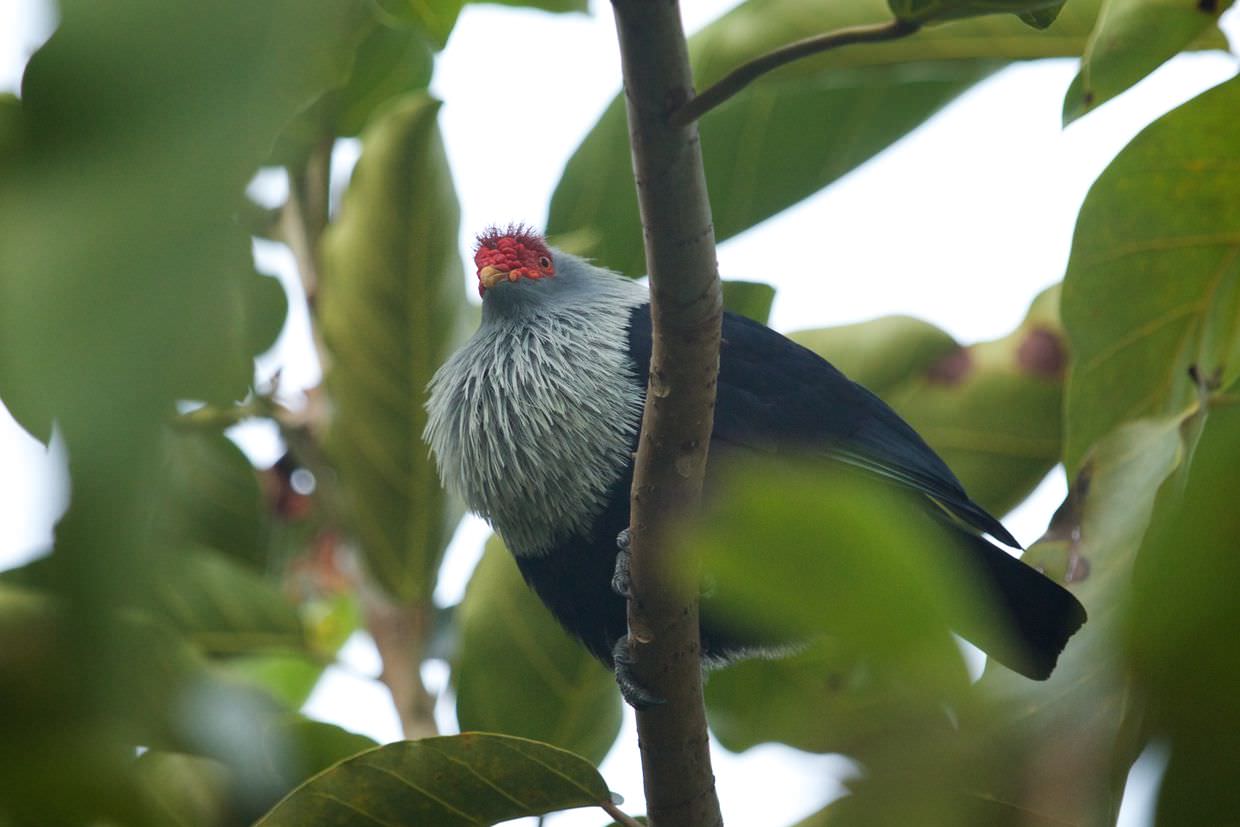
Green-backed heron
Spotted by the house as well, it seems the house is a birding hotspot. This inquisitive looking bird poked around in the leaves looking for a meal. When it catches sight of you it stares with its beady eyes, down its long beak, before squawking and flying off. I saw a couple flying up and down the beach in the early morning when doing beach patrols.
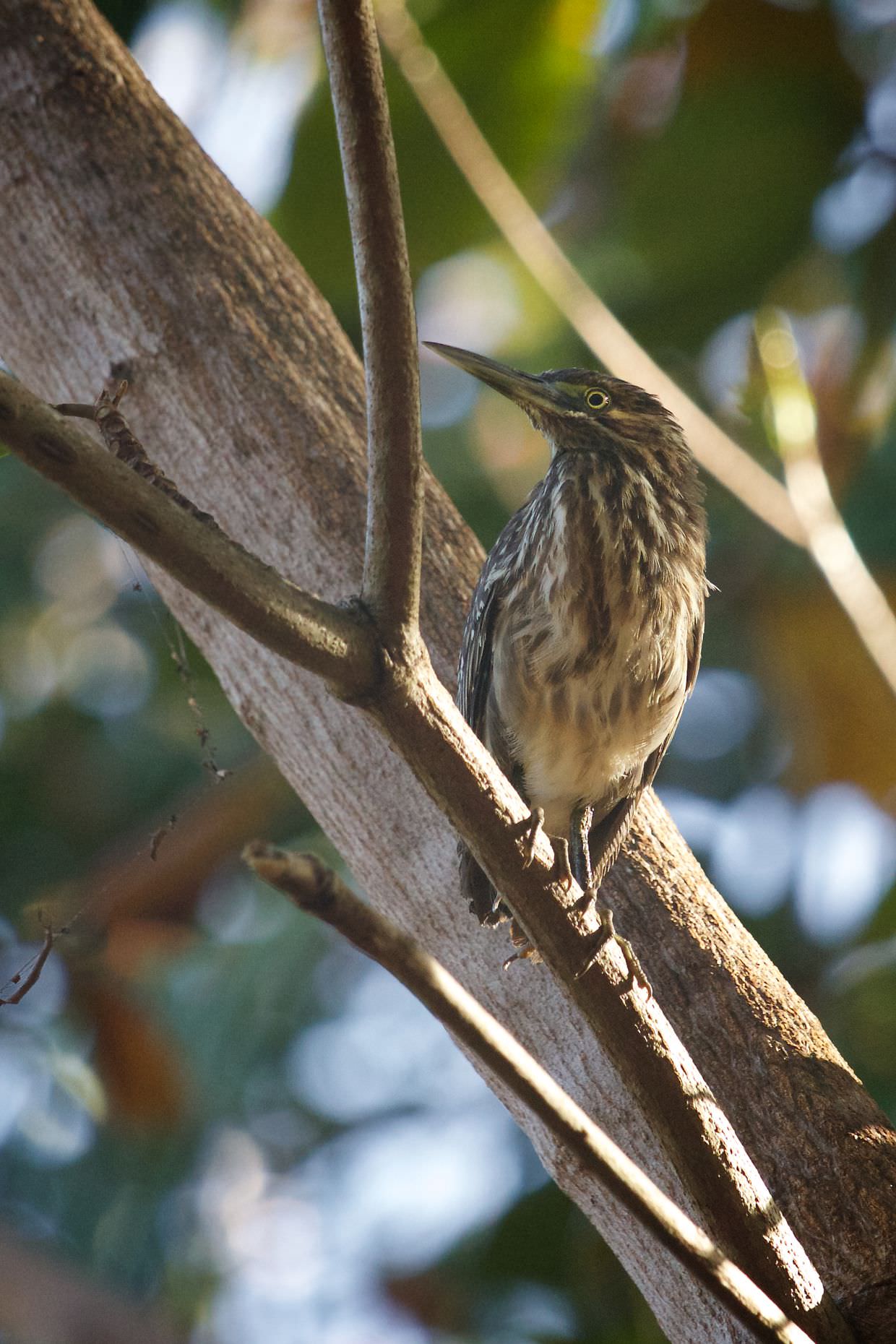
Common myna
The common myna, or indian myna, are everywhere, despite continued efforts to eradicate them. As mentioned, they’re an aggressive invasive species that harm other birds. Despite this they remain interesting to observe, I rarely saw them on the ground, often nipping down for a quick meal before returning to the treetops.
Maxine posted a video of a myna up close, singing the song it makes each time they’re fed.
Red fodys
An exotic, but not invasive, species found here is the madagascar red fody. Only a couple of times did I see the delightful bright red male, once on spa hill, then again on bernica. But around the bistro there was a group of active females and what looked like juvenile males; birds that were showing some signs of turning red.
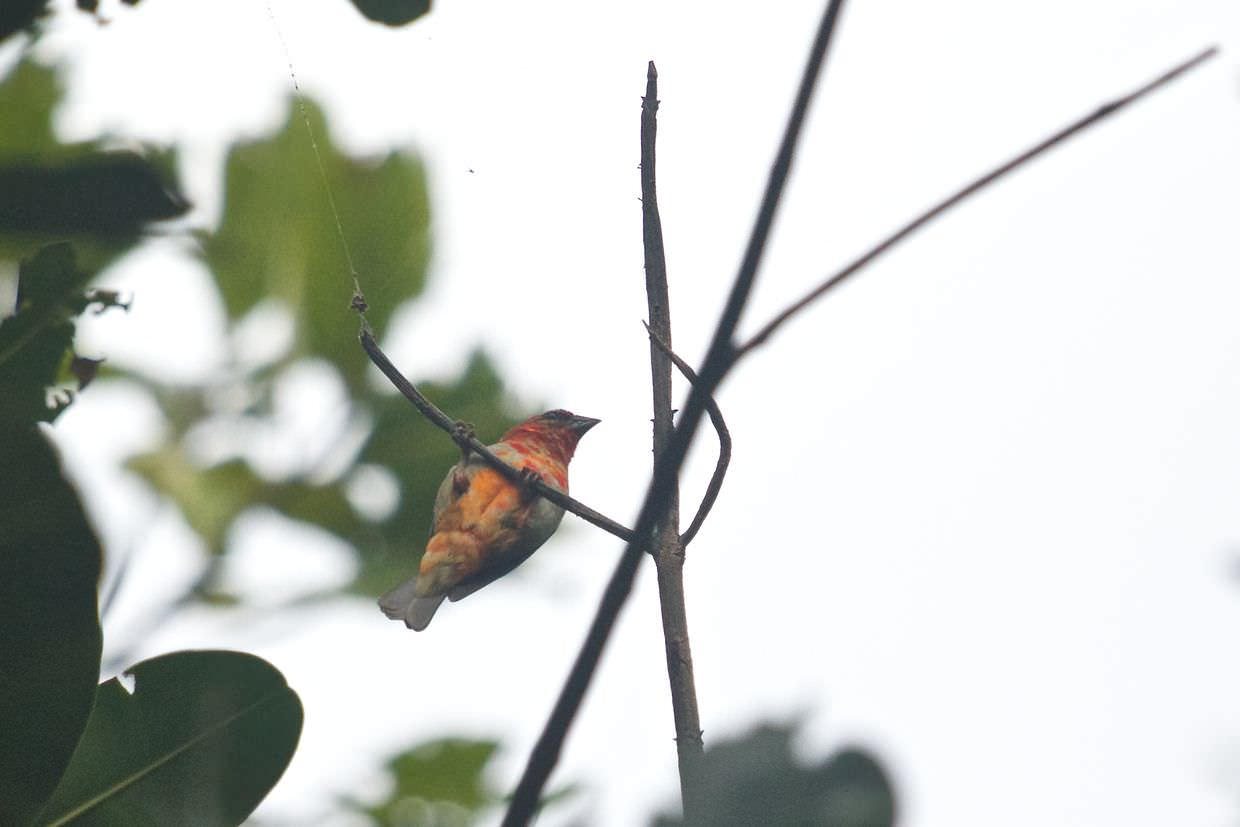
Common whimbrel
CJ told me this is a migratory bird, but that some have stayed behind. They have long legs and a curving beak, they remind me of a lifelike curlew model I have at home. Against the dying grass in the dry season they have perfect camouflage, and would always fly away squealing (an awful screeching squeal) before I could get close enough for a photo.
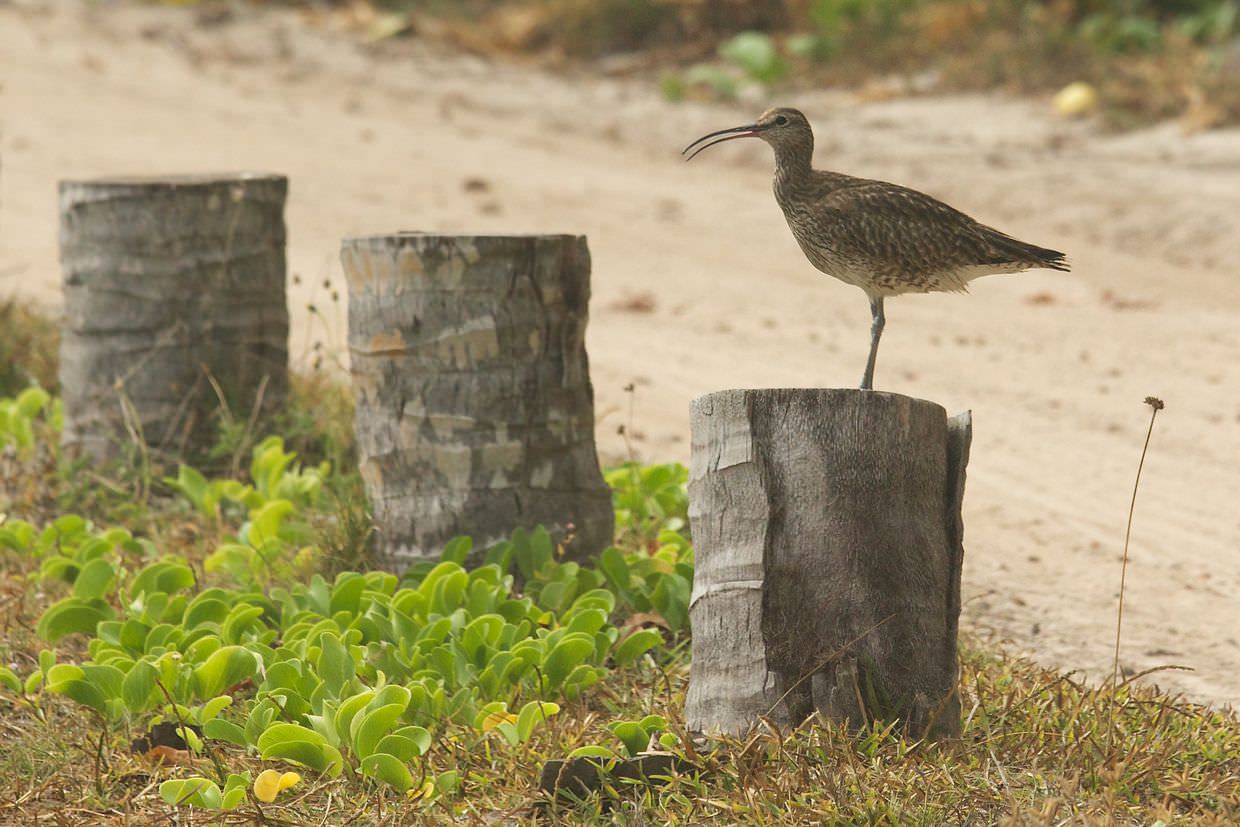
Common sandpiper
I found one of these regularly patrolling petit anse, camouflaged against the sand and rocks, its disguise was always given away by its bobbing tale. It has a habit of flying to whichever end of the beach you aren’t on.
White-tailed tropic bird
These beautiful white seabirds nest amidst the rocks on North Island. A scheduled activity which we never took part in is a bit of boulder hopping, to find and identify tropic bird nests. Despite this we discovered two by chance, one near a fallen indian almond tree on staff beach, where a fluffy chick could be seen poking its nose out occasionally, and another up on spa hill, on the trail to the viewpoint. When not in there nests you can see them circling high above the island, when they fly they look just like the birds you draw as a child, a perfect ‘m’ shape, with a magnificent long thin tail.
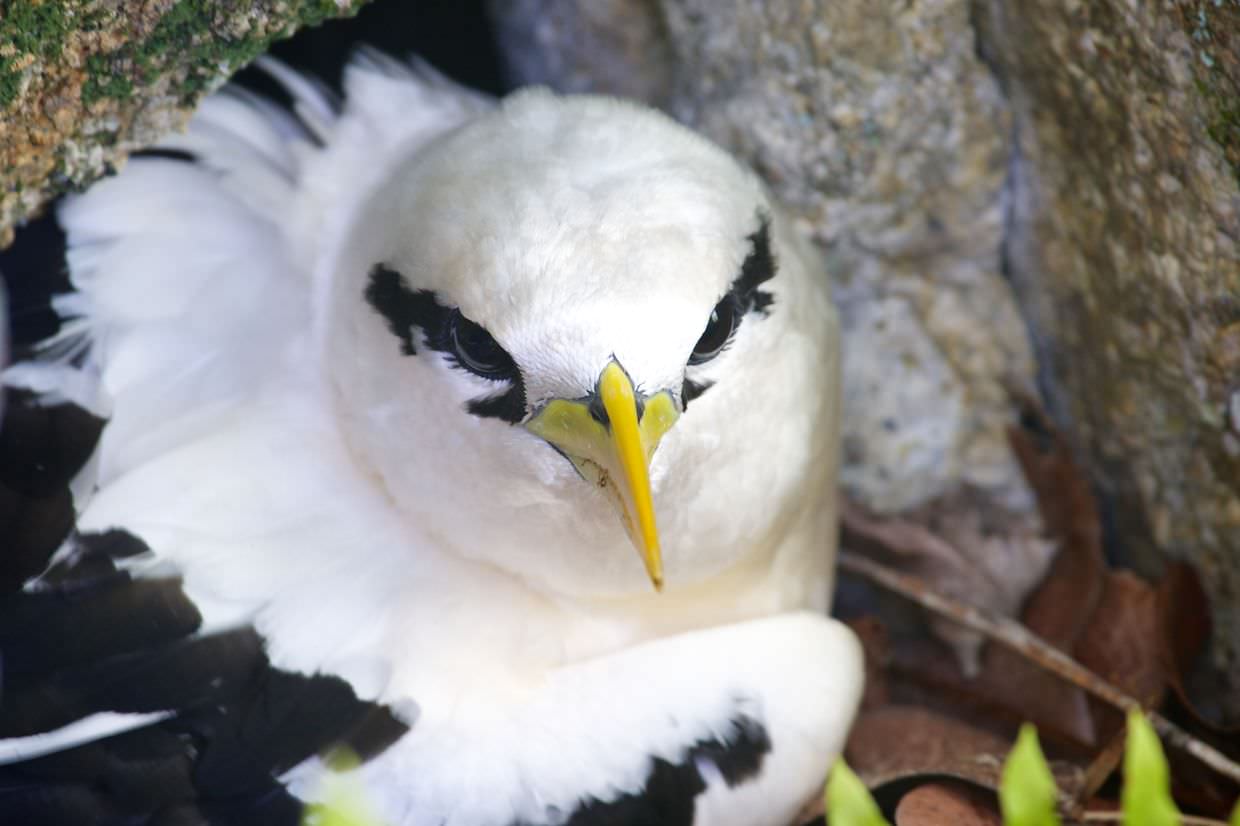
Seychelles white-eye
The elusive Seychelles white-eye is an endangered bird that’s endemic to Seychelles. A few years ago a group of 25 were re-introduced to north island. They fly in small groups, four to six I would guess, and you often hear their chirping songs without being able to see them. But they aren’t too afraid of humans, and when they do appear, then can often come quite close.
My favourite encounter was outside the environment office, when a group of 6 landed in a small tree, not much taller than me, besides us. I reached out and hoped for a “snow white” moment, as Tarryn put it. The birds were centimetres from my hand, but none made the leap.
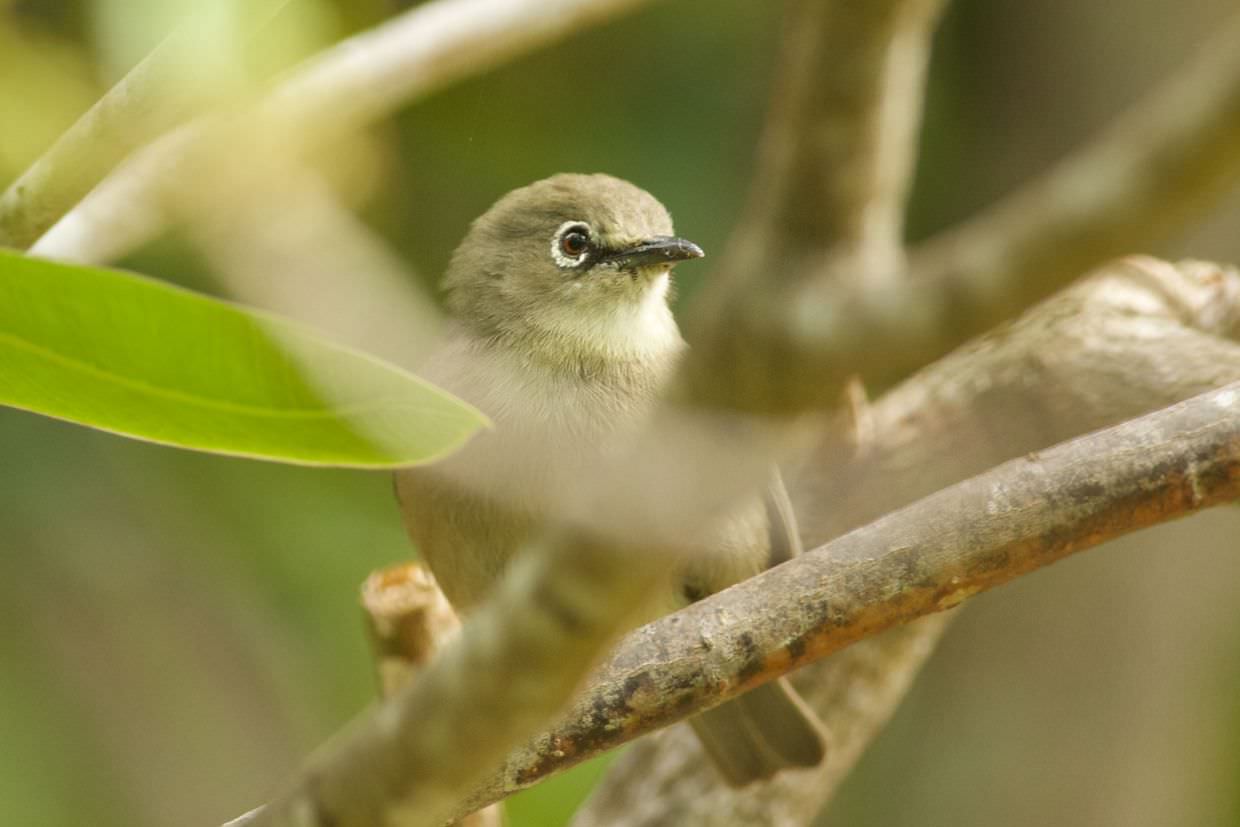
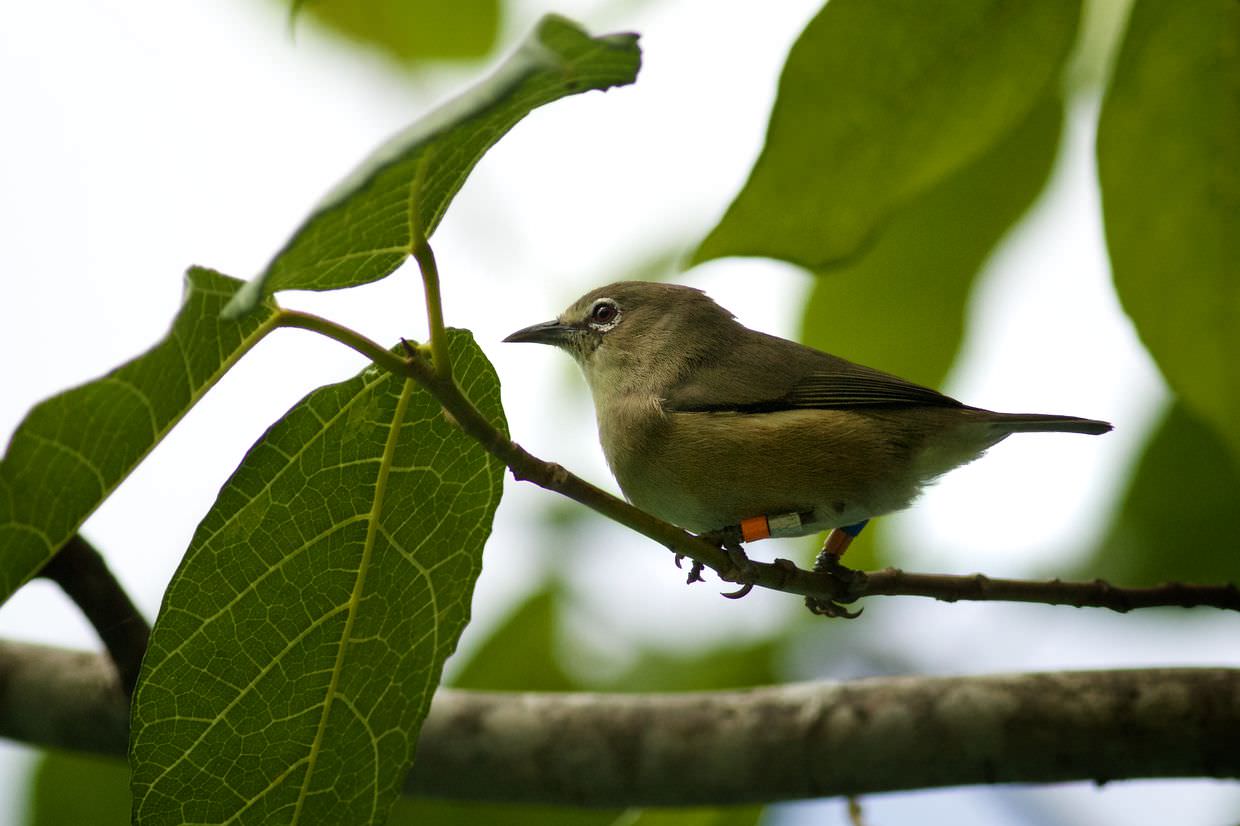
Seychelles kestrel
North island has four seychelles kestrels, a pot of kestrel rings sits on CJ’s desk, though there’s no plan on when or how to ring them, and no real urgency to do it. My sightings of these were very rare, one flew past very quickly while I hiked the bernica trail, and the only other sighting was on West Beach, the kestrel was on a leafless indian almond, high up, against a bright blue sky – I managed to get a photo.
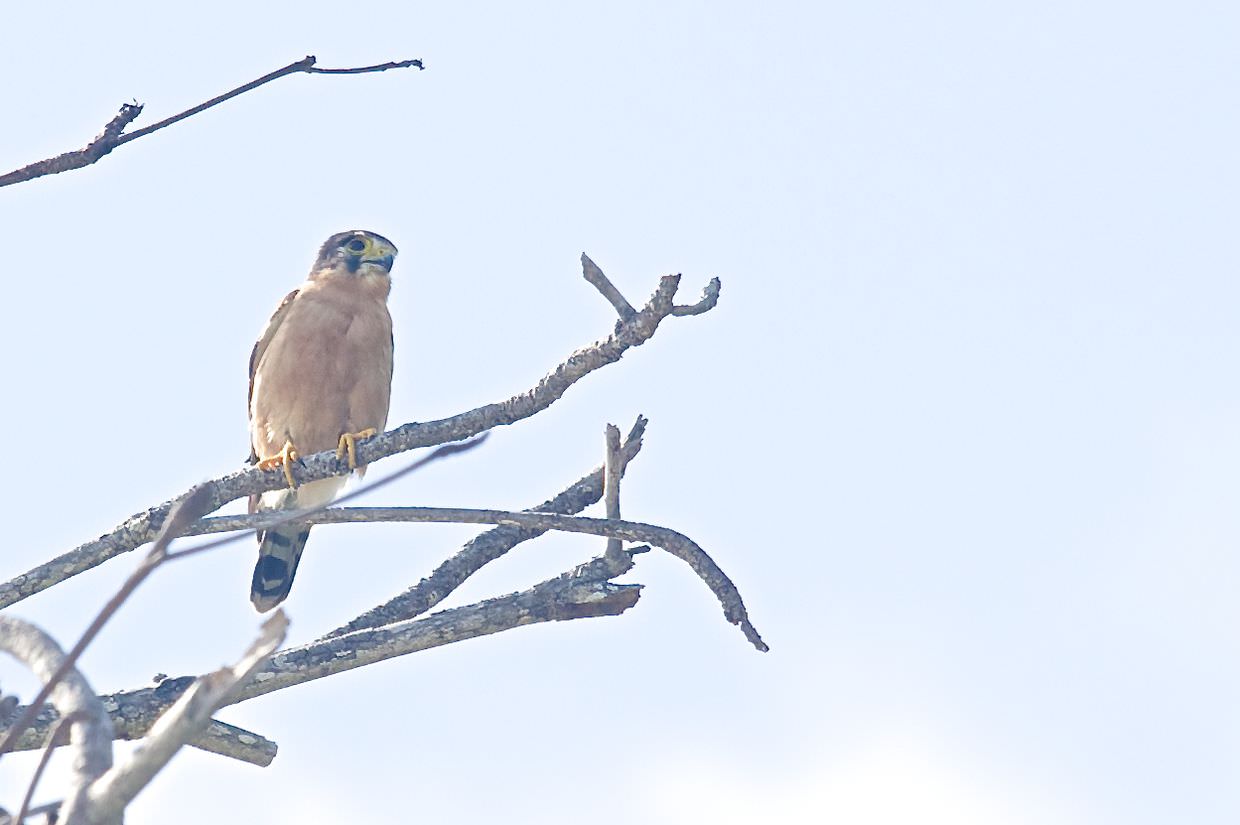
Fruit bats
The skies are relatively quiet, the birds stay on the ground for the most part, there’s nothing to predate them, so they’re comfortable walking and foraging. Something does fly high, with a half-metre wingspan, but it’s not a bird; North Island, much like Silhouette, has a population of seychelles fruit bats – they’re active in the day, and when not flying between trees they hang upside down munching on takamaka fruit.
They squabble amongst each other, making sounds like monkeys. And a word of warning, if you’re standing beneath one and it moves from hanging upside down to what you’d say is the “right way up”, it means it’s going to drop its waste on you, so it’s wise to move out the way.
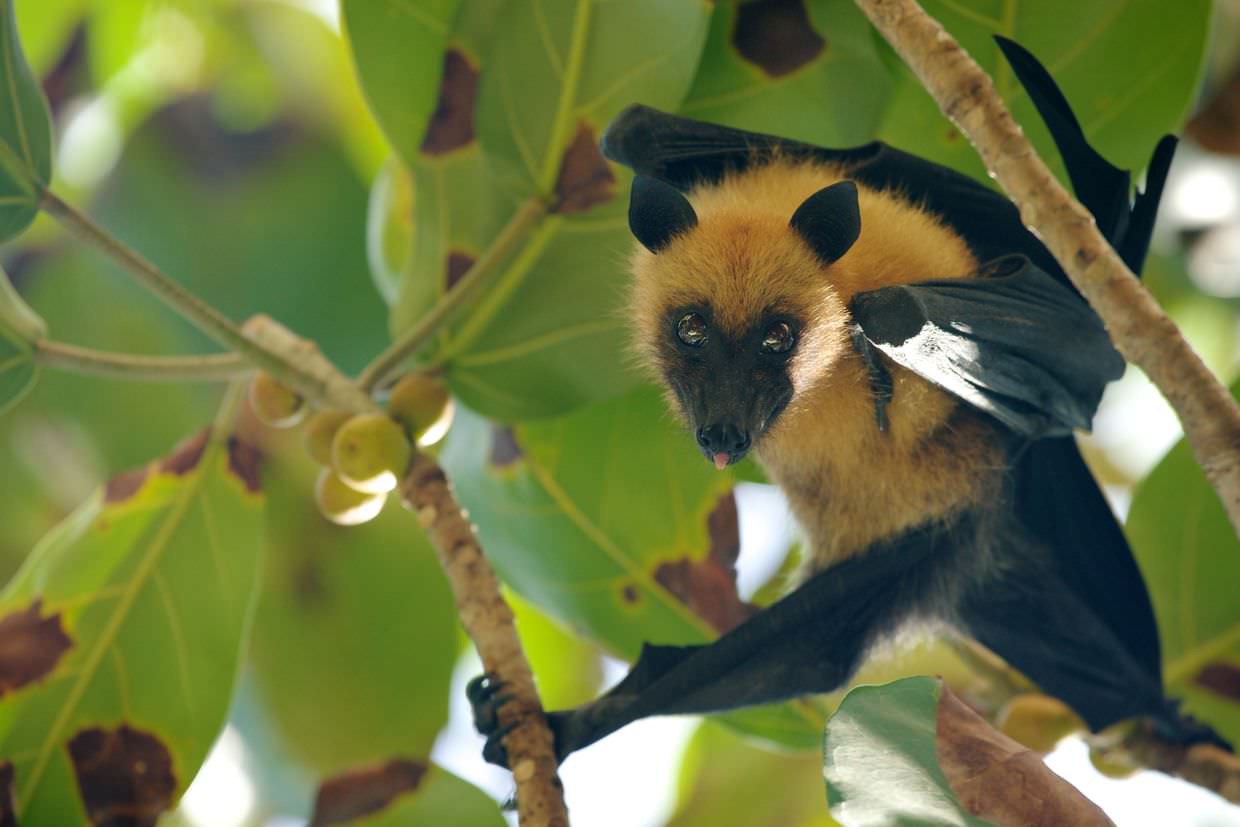
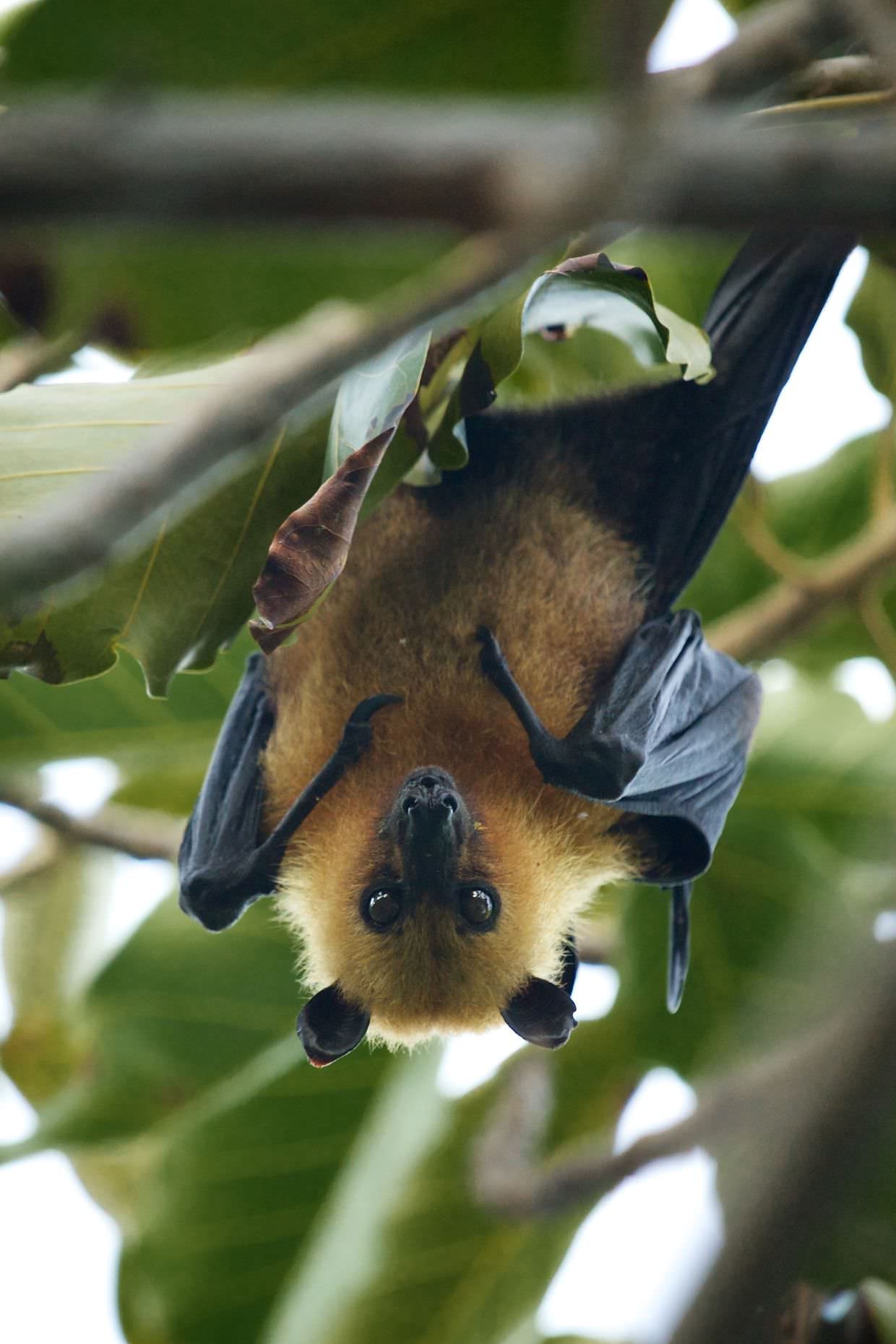
Lizards
Seychelles skink
There really isn’t much that lives in the undergrowth, the brown dying leaves are devoid of much variety, which is good if you’re going trudging about in them, picking up coconuts and so on. But wherever you do go, there’ll be rustling and movement, what might be an exciting sound of activity elsewhere in the world, here it’s always the same: a seychelles skink lizard. They’re everywhere, and there’s not much eating them, save an occasional kestrel.
As you wander about, the skinks will follow you, investigating all the turned over foliage you leave behind. They are brave too, not only do they get very close, some have been known to leap on people, in an attempt to grab food – an action that often leads to them being flung far in a knee-jerk reaction.
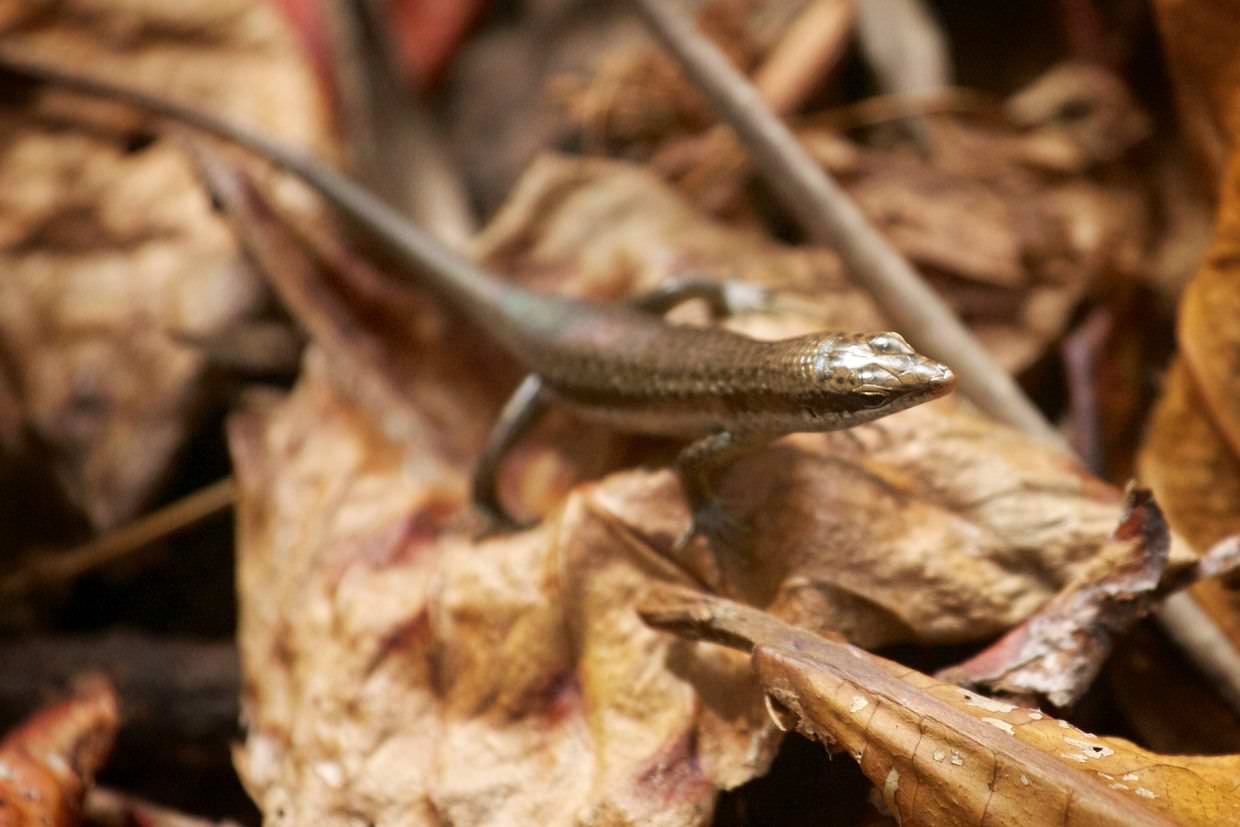
Phelsuma gecko
There is another lizard, an altogether more charming one. It’s the phelsuma gecko, normally green, we noticed it changes black when it feels threatened. There would scale the walls of the volunteer house, eating pesky mosquitoes for us. One cutie climbed my camera tripod while I was photographing white-eyes, I had to stop to let it have a go.
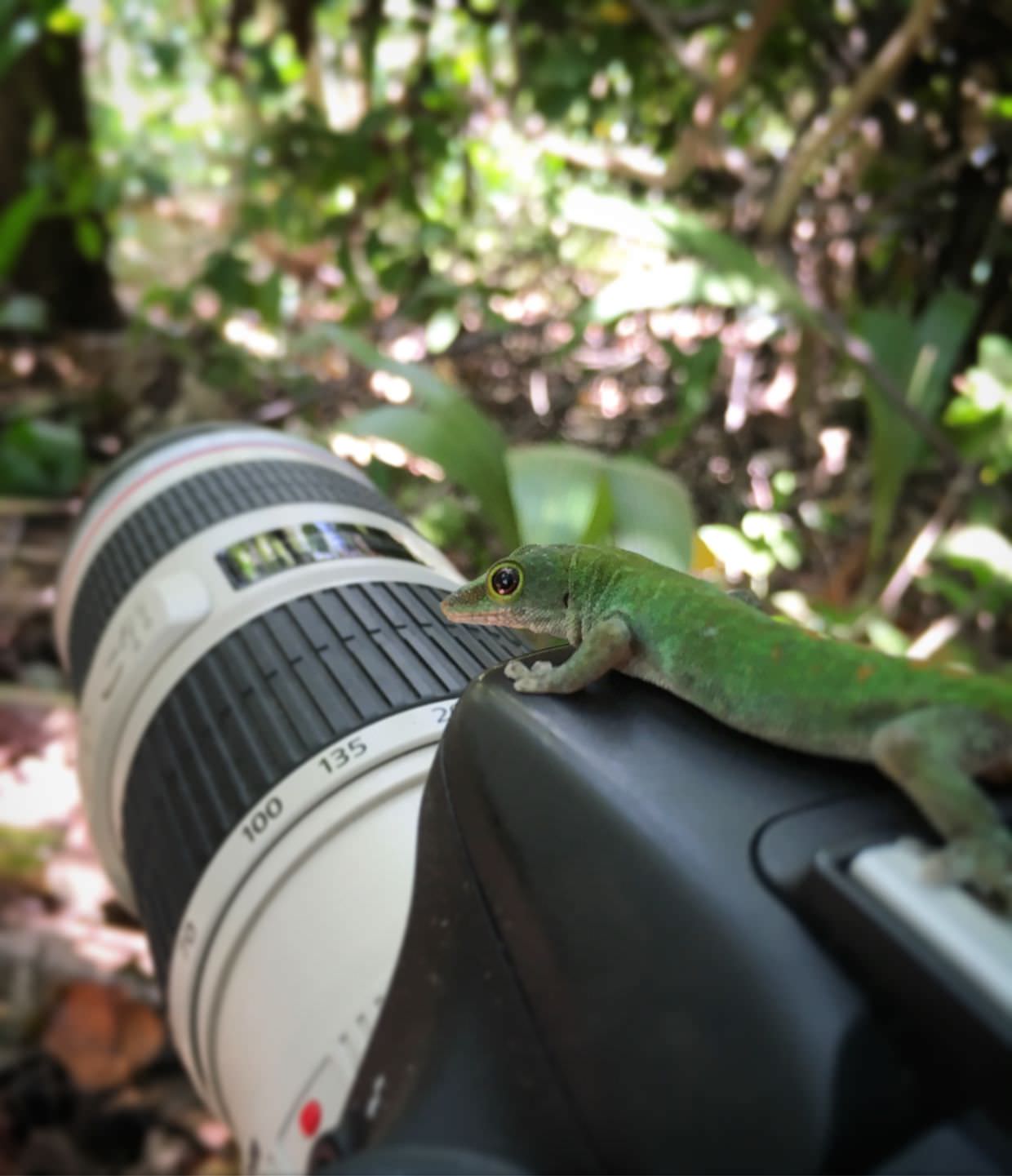
Crabs
Crabs are all over honeymoon and west beach, and there’s a variety too. It’s mostly ghost crabs, white crabs with pointed eyes that range from 2-10cm – on a quiet beach you can see hundreds dancing about in the waves, digging holes and sifting sand. Less common are sally lightfoot crabs, a more beautiful crab with a mottled orange pattern, found only on the rocks. Near the rocks are hermit crabs, and orange crabs too. Besides the sala we found a small colony of fiddler crabs, crabs with one claw bigger than the other. And at the top of West Beach were the biggest crabs, I only saw them at night, and we haven’t identified them, with a carapace about 30cm across, we believe they could be small mangrove crabs.
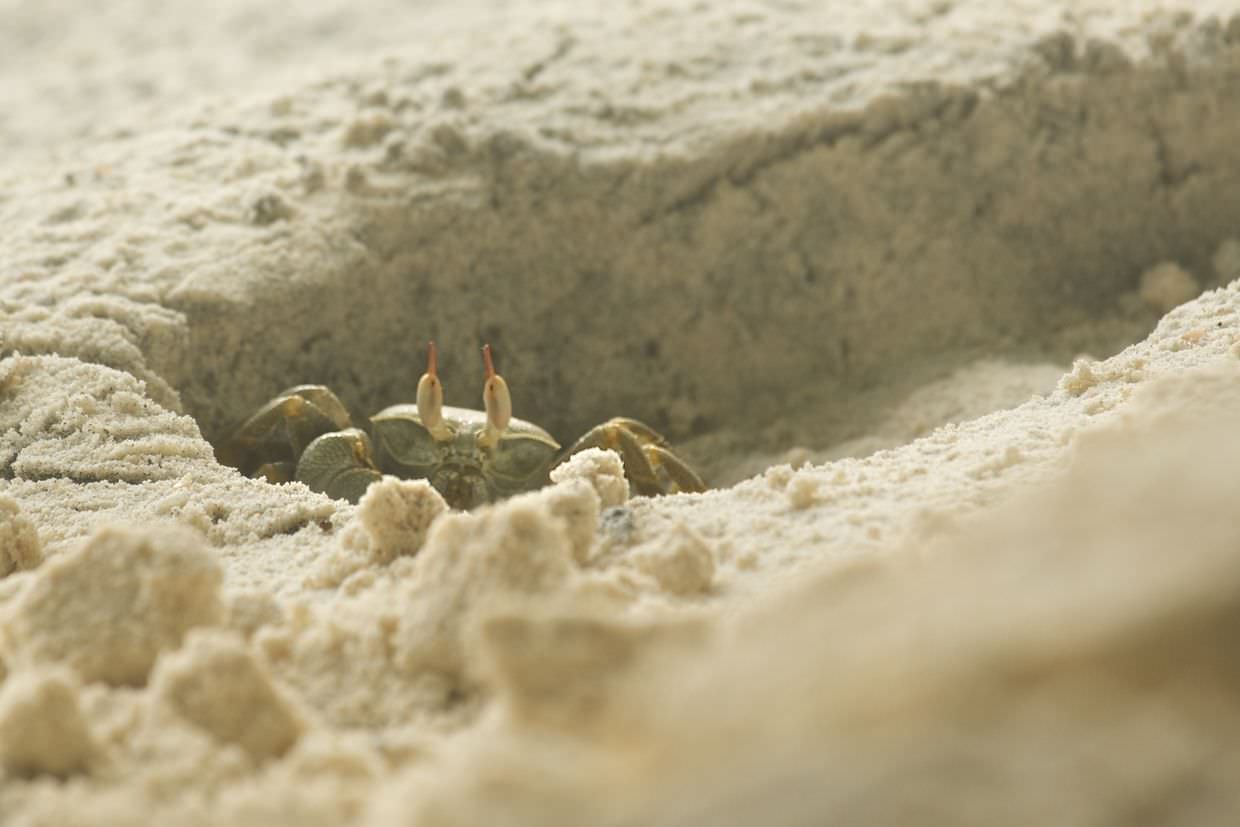
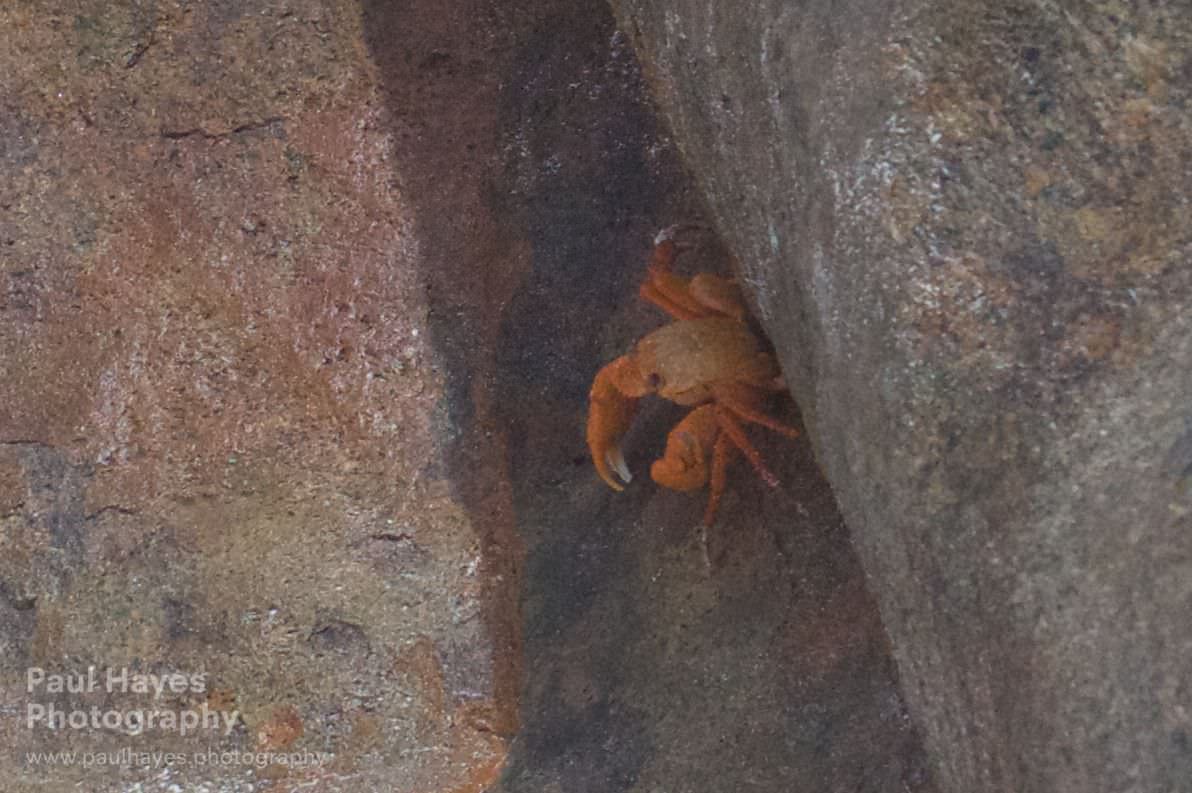
Possibly a small mangrove crab.
Insects, spiders and centipedes
There’s a couple of things to be wary of on the island. Aside from the palm spiders which can be a little scary when plucking out coconuts or going on hikes, there are huntsman spiders and giant centipedes.
Huntsman spiders occasionally come into a house, and occasionally get quite big. I believe they can give you a little bite if you get too close. We had two small ones in the house, but they were dispatched quickly by Paul M. They can run amazingly fast.
Something that can however give a nasty bite is the giant centipede. This beast can grow up to a foot long and is known to give one of the most painful insect bites. We saw a small one squirming around near the entrance to the house, and a massive one on the road to west beach, but none of us were bitten, and none were seen indoors.
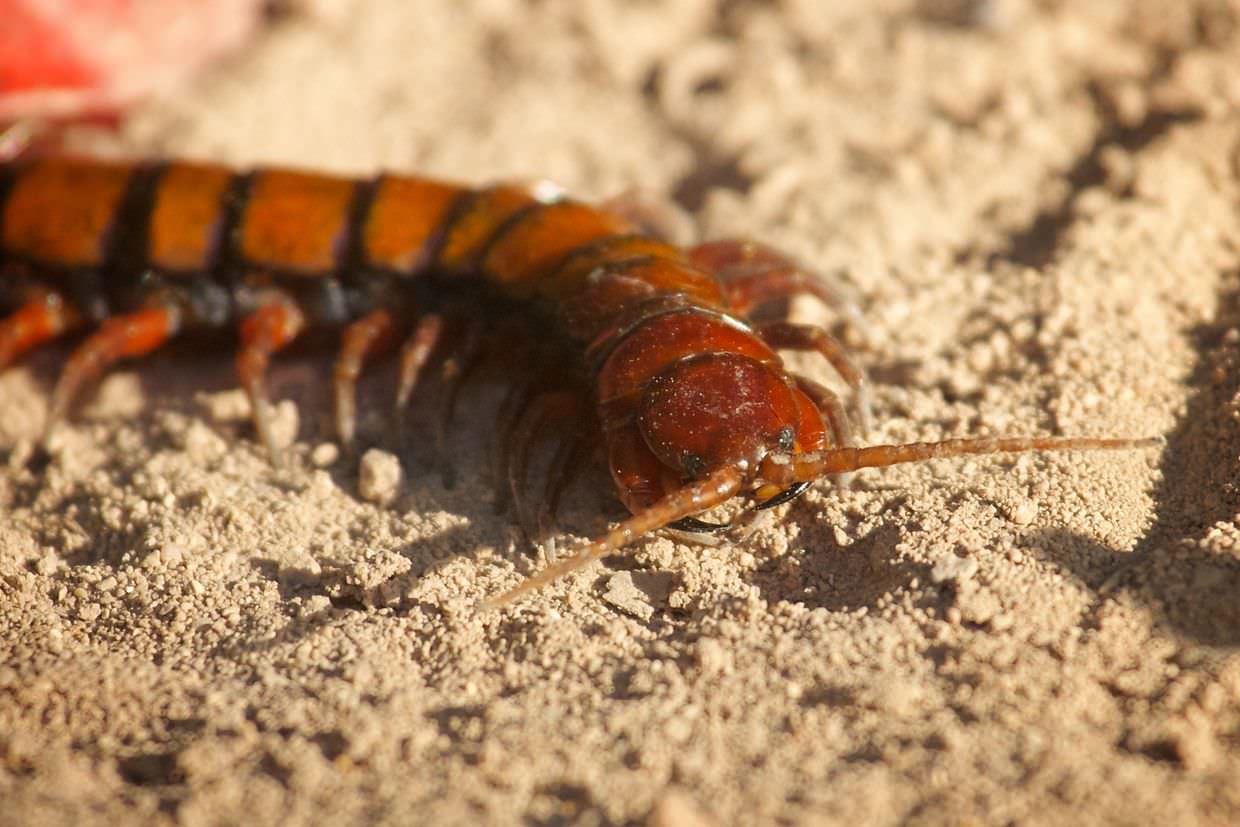
Species spotted
Birds
- Seychelles blue pigeon
- Common whimbrel
- Madagascar turtle dove
- Barred ground dove or Zebra dove
- Common moorhen
- Common myna
- Green-backed heron
- Madagascar red fody (male, female, male juvenile)
- White-tailed tropic bird
- Common sandpiper
- Seychelles white-eye
- Seychelles kestrel
- Seychelles sunbird
- Brown noddy
Other
- Green Turtle
- Bioluminescent plankton
- Giant aldabra tortoise
- Seychelles fruit bat
- Seychelles skink lizard
- Phelsuma gecko
- Yellow wasp
- Sally lightfoot crab
- Hermit crab
- Ghost crab
- Orange crab
- Mangrove crab (probably, hard to identify from photo)
- African land snail
- Palm spider
- Huntsman spider
- Long-winged derpid planthopper fly
- Portuguese man of war/blue bottle jellyfish
- Giant centipede (Scolopendra subspinipes)
- Seychelles hairy caterpillar
- Mud skipper fish
- Eagle ray